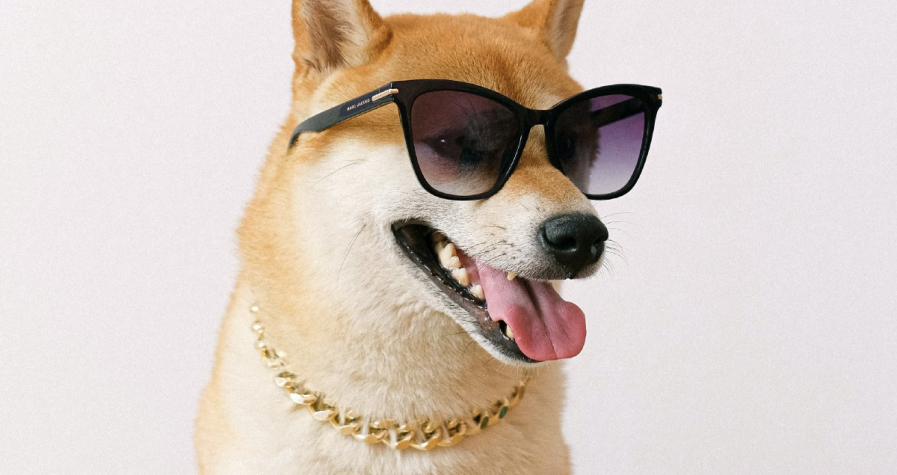Here’s how “wear-to-earn” NFTs will affect the fashion industry and what might happen if they become popular.
The rise of the Metaverse and Web 3.0 is set to disrupt a variety of industries, including the multibillion-dollar global fashion industry. Traditional fashion design can transform into virtual wearables that can be used in both augmented reality (AR) and real life as the world shifts from physical to digital.
Megan Kaspar, managing director at Magnetic Capital and a member of Red DAO — a fashion-focused decentralized autonomous organization — said that she believes digital fashion nonfungible tokens, or NFTs, will be the most popular NFT category in Web 3.0:
“Digital fashion non-traditional textiles (NFTs) include clothing, shoes, jewelry, accessories, and other items that can be worn virtually or within gaming ecosystems.” These digital wearables are currently used for speculation and collection, to clothe avatars in decentralized games, to wear in augmented reality environments, and to be superimposed onto photos and videos.”
While Kaspar is aware that digital wearables are currently being used in decentralized gaming environments, such as the NFTs used in Decentraland, she believes that wearable fashion will become more interactive in the next two years. Kaspar, for example, recently demonstrated how to wear virtual NFT earnings and other accessories during video interviews.
The wear-to-earn model has made its way into the fashion industry.
Kaspar went on to say that in AR environments, a “wear-to-earn” model will thrive, noting that designers, brands, and retailers will create clothes to accommodate digital closets. Kaspar stated that in order to build long-term relationships with consumers, designers will pay consumers to wear their virtual items:
“Brands will reward customers for wearing pieces by giving them access to exclusive items, airdropping fashion items to their virtual wallets, or paying them in the form of a fungible token.”
Dolce & Gabbana, the Italian luxury fashion house, will soon launch “D&G Family,” a community-based NFT drop taking place on the UNXD curated marketplace, according to Kaspar. “This will provide consumers with access to exclusive physical apparel that will only be available during the drop,” she explained. To highlight the power of metaverse wearables, Dolce & Gabbana recently launched their “Collezione Genesi” NFT collection.
While Kaspar expects UNXD to be the first luxury platform to offer wear-to-earn features, other NFT ecosystems have begun to embrace the concept. For example, Davaproject, an NFT project from the startup studio Unopnd, is currently developing a system of avatar NFTs that reflect changes on a blockchain network in various combinations. According to a recent announcement, the project will begin with 10,000 avatar NFTs called “Dava” that will be minted with 30,000 wearable items. Davaproject will determine the rarity of each wearable and display different rankings on a user dashboard. By wearing these items, owners will receive benefits such as invitations to community events, NFT airdrops, giveaways, and new item drops.
Given the rise of virtual wearables, Norman Tan, editor-in-chief of Vogue Singapore, said that he believes digital fashion is here to stay. Tan recently released the September issue of Vogue Singapore, which featured the theme “New Beginnings.” The September issue featured a one-of-a-kind print cover in the form of a QR code that led to two digital-only NFT covers. Tan stated:
“At Vogue Singapore, fashion and innovation have always been at the heart of what we do.” We took the risky step of venturing into the metaverse — the destination for a new class of digital artists and designers — with the global September issue theme of ‘New Beginnings.’
Tan added that virtual wearables will help alleviate sustainability issues by introducing a post-waste economy, which will not only disrupt the Metaverse but will also disrupt the Metaverse. According to Kaspar, 40% of western closets go unworn, and digital clothes can be an eco-friendly substitute for physical items.
Virtual fashion shows are also proving to be more sustainable and accessible. For example, NFT Runway, a company that democratizes fashion by enabling brands to deploy in sustainable ways, is hosting a digital fashion show during “Fashion Community Week San Francisco” on December 3-5. The interactive fashion show will be streamed live in the Metaverse, with NFT versions of physical items recreated using the patented 3DREALtm technology. Participants in the audience will be able to virtually “hop on” the runway to view each item while twisting their avatar around to view the clothing from any angle.
Oh Tepmongkol, chief operating officer of Ohzone, Inc, the company behind Ohzone’s 3DREALtm interactive technology, said that it makes sense to incorporate NFTs into both virtual and real-world fashion shows:
“They are tokens that serve as authenticity certificates, and they can add a lot of utility to any clothing item.” This could imply gaining special access to the designer’s online community or unlocking a digital version of the item. NFTs are also simple to implement, as they can be incorporated into any piece of clothing via a small QR Code.”
Tepmongkol also mentioned that NFT wearables make it simple to donate to charities. For example, NFT Runway’s digital fashion show will include an auction to benefit a number of non-profit organizations with sales revenue. Tepmongkol claims that smart contracts on the blockchain enable NFT Runway to create “NFT endowments.” “This is where charities can be set up to receive a portion of sales through the smart contract in perpetuity,” she explained.
The Digital Wearables of the Future
While the concept of interactive digital fashion is still in its early stages, Kaspar believes that the wear-to-earn model will eventually outnumber the play-to-earn model. Play-to-earn has become the most popular search term in the blockchain ecosystem since the release of Axie Infinity.
Kaspar, on the other hand, believes that the wear-to-earn concept will undoubtedly appeal to the general public — particularly women — rather than just gamers. Kaspar, for example, stated that digital wallets will soon resemble virtual closets, which will attract many new users to the blockchain space: “Many companies are working on creating interoperable digital closets where you can move NFTs in and out of.”
Despite being innovative, Tan pointed out that online games aided in the rise of digital fashion:
“Fortnite and other online games have created a whole new economy, with brands such as Balenciaga seeing the opportunity to reach out to these users in a digitally-native manner.” This, combined with the introduction of COVID-19, resulted in more people going online and experimenting with how they can best interact and express themselves in a digital sphere.”
According to Sebastien Borget, co-founder and chief operating officer of The Sandbox — a decentralized gaming virtual world powered by NFTs — the difference between play-to-earn wearables and wear-to-earn fashion-focused NFTs is that one is geared toward players and the other toward socializers. He also stated that The Sandbox will be incorporating wear-to-earn NFTs into many of its games in the near future:
“Having wearables that reward users based on engagement is an intriguing model that really fits the identity of avatar NFTs — the more time you spend using the avatar, the more money you can earn.”
Tepmongkol also stated that NFT Runway is attempting to connect the virtual fashion industry with decentralized games: “Some Web 3.0 metaverse spaces, such as Decentraland, require some additional formatting and registration to work on their platforms; we are working on that as part of our long-term roadmap.”

 English
English 简体中文
简体中文 繁體中文
繁體中文 Español
Español 日本語
日本語 한국어
한국어 ภาษาไทย
ภาษาไทย

